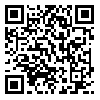Volume 3, Issue 3 (2018)
IJMPP 2018, 3(3): 83-86 |
Back to browse issues page
Download citation:
BibTeX | RIS | EndNote | Medlars | ProCite | Reference Manager | RefWorks
Send citation to:



BibTeX | RIS | EndNote | Medlars | ProCite | Reference Manager | RefWorks
Send citation to:
Khorasani J, Tavafian S, Zarei F. Status of Musculoskeletal Pains and Disorders among Computer Users. IJMPP 2018; 3 (3) :83-86
URL: http://ijmpp.modares.ac.ir/article-32-28128-en.html
URL: http://ijmpp.modares.ac.ir/article-32-28128-en.html
1- Health Education & Health Promotion Department, Medical Sciences Faculty, Tarbiat Modares University, Tehran, Iran
2- Health Education & Health Promotion Department, Medical Sciences Faculty, Tarbiat Modares University, Tehran, Iran , tavafian@modares.ac.ir
2- Health Education & Health Promotion Department, Medical Sciences Faculty, Tarbiat Modares University, Tehran, Iran , tavafian@modares.ac.ir
Abstract: (4616 Views)
Aims: Nowadays, with the advancement of life and more use of computers, musculoskeletal pains and disorders in computer users have also increased. Therefore, the aim of this study was to evaluate the status of musculoskeletal pains and disorders of computer users in health care providers working in comprehensive health centers of Sirjan.
Instruments & Methods: In this descriptive-analytical study, 110 health care providers working in comprehensive health centersof Sirjan were selected through simple random sampling. In order to evaluate musculoskeletal discomfort and pains, a Nordic questionnaire was used and a body map was used to determine the location of pain. Data analysis was performed, using SPSS software.
Findings: According to the findings, the highest pain and discomfort inneck was observed in 46.4% and, then, the pain in the shoulder region was 12.7%. In the lower limb, the most pain was reported in the waist with 18.2% and the least pain was reported in left wrist, both elbows and ankle.
Conclusion: Musculoskeletal discomforts are clearly seen in computer users; more discomforts and pains are observed in the upper body, especially in the neck and shoulders, and in most cases, this pain does not come from a particular illness or discomfort. Further studies are suggested to determine the status and non-ergonomic points of work in these individuals.
Instruments & Methods: In this descriptive-analytical study, 110 health care providers working in comprehensive health centers
Findings: According to the findings, the highest pain and discomfort in
Conclusion: Musculoskeletal discomforts are clearly seen in computer users; more discomforts and pains are observed in the upper body, especially in the neck and shoulders, and in most cases, this pain does not come from a particular illness or discomfort. Further studies are suggested to determine the status and non-ergonomic points of work in these individuals.
Article Type: Descriptive & Survey |
Subject:
Musculoskeletal Pain Prevention
Received: 2018/06/12 | Accepted: 2018/08/2 | Published: 2018/09/22
Received: 2018/06/12 | Accepted: 2018/08/2 | Published: 2018/09/22
References
1. Jafari Nodoushan R, Halvani GH, Vatani Shoaa J, Salmani Nodoushan Z. Survey of musculoskeletal disorders among bank staff in Yazd. Occup Med Q J. 2011;3(1):1-7. [Persian]
2. Golgoli E, Mottaghian H, Roshandel Hesari A. Study of musculoskeletal disorders and pain prevalence in computer operators in Bojnoord. Paramed Sci Mil Health. 2018;13(1):41-6. [Persian]
3. Witter RZ, Tenney L, Clark S, Newman LS. Occupational exposures in the oil and gas extraction industry: State of the science and research recommendations. Am J Ind Med. 2014;57(7):847-56. [DOI:10.1002/ajim.22316]
4. Harisinghani MG, Blake MA, Saksena M, Hahn PF, Gervais D, Zalis M, et al. Importance and effects of altered workplace ergonomics in modern radiology suites. Radiographics. 2004;24(2):615-27. [DOI:10.1148/rg.242035089]
5. Mooudi MA, Hassanzadeh H. CTD in view of ergonomy occupational medicine. Tehran: Hayyan; 2004. [Persian]
6. Bathaei A, Khalili K. Diseases due to computer work, work and environment center. Tehran: Ministry of Health; 2005. pp. 29-36.
7. Gerr F, Marcus M, Monteilh C. Epidemiology of musculoskeletal disorders among computer users: Lesson learned from the role of posture and keyboard use. J Electromyogr Kinesiol. 2004;14(1):25-31. [DOI:10.1016/j.jelekin.2003.09.014]
8. Hoogendoorn WE, Van Poppel MN, Bongers PM, Koes BW, Bouter LM. Systematic review of psychosocial factors at work and private life as risk factors for back pain. Spine (Phila Pa 1976). 2000;25(16):2114-25. [DOI:10.1097/00007632-200008150-00017]
9. Viry P, Creveuil C, Marcelli C. Nonspecific back pain in children, a search for associated factors in 14-year-old schoolchildren. Rev Rhum Engl Ed. 1999;66(7-9):381-8.
10. Ozgoli G, Bathaiee A, Alavi Majd H, Mirmohamadali M. Musculoskeletal symptoms assessment among midwives, Hamedan, 2002. Iran Occup Health J. 2006;3(1-2):37-42. [Persian]
11. Juul-Kristensen B, Kadefors R, Hansen K, Byström P, Sandsjö L, Sjøgaard G. Clinical signs and physical function in neck and upper extremities among elderly female computer users: The new study. Eur J Appl Physiol. 2006;96(2):136-45. [DOI:10.1007/s00421-004-1220-4]
12. Cho CY, Hwang YS, Cherng RJ. Cherng, Musculoskeletal symptoms and associated risk factors among office workers with high workload computer use. J Manipulative Physiol Ther. 2012;35(7):534-40. [DOI:10.1016/j.jmpt.2012.07.004]
13. Eltayeb SM, Staal JB, Khamis AH, De Bie RA. Symptoms of neck, shoulder, forearms, and hands: A cohort study among computer office workers in Sudan. Clin J Pain. 2011;27(3):275-81. [DOI:10.1097/AJP.0b013e3181fe94ef]
14. Harcombe H, Mc Bride D, Derrett S, Gray A. Prevalence and impact of musculoskeletal disorders in New Zealand nurses, postal workers and office workers. Aust N Z J Public Health. 2009;33(5):437-41. [DOI:10.1111/j.1753-6405.2009.00425.x]
15. Ranasinghe P, Perera YS, Lamabadusuriya DA, Kulatunga S, Jayawardana N, Rajapakse S, et al. Work-related complaints of arm, neck and shoulder among computer office workers in an Asian country: Prevalence and validation of a risk-factor questionnaire. BMC Musculoskelet Disord. 2011;12:68. [DOI:10.1186/1471-2474-12-68]
16. Gerr F, Marcus M, Ensor C, Kleinbaum D, Cohen S, Edwards A, et al. A prospective study of computer users: I. Study design and incidence of musculoskeletal symptoms and disorders. Am J Ind Med. 2002;41(4):221-35. [DOI:10.1002/ajim.10066]
17. Brandt LP, Andersen JH, Lassen CF, Kryger A, Overgaard E, Vilstrup I, et al. Neck and shoulder symptoms and disorders among Danish computer workers. Scand J Work Environ Health. 2004;30(5):399-409. [DOI:10.5271/sjweh.828]
Send email to the article author
| Rights and permissions | |
 |
This work is licensed under a Creative Commons Attribution-NonCommercial 4.0 International License. |








